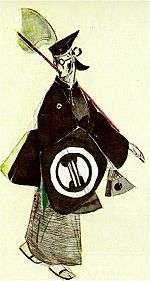History of suicide
| Suicide |
|---|
 |
|
Related phenomena |
Attitudes toward suicide have varied through time and across cultures.
Antiquity and Middle Ages
In general, the pagan world, both Roman and Greek, had a relaxed attitude towards the concept of suicide. The Council of Arles in 452 stated "if a slave commits suicide no reproach shall fall upon his master."[1] In the Middle Ages, the Church had drawn-out discussions on the edge where the search for martyrdom was suicidal, as in the case of some of the martyrs of Córdoba.
There are some precursors of Christian hostility to suicide in ancient Greek thinkers. Pythagoras, for example, was against the act, though more on mathematical than moral grounds, believing that there was only a finite number of souls for use in the world, and that the sudden and unexpected departure of one upset a delicate balance. Aristotle also condemned suicide, though for quite different, far more practical reasons, in that it robbed the community of the services of one of its members. A reading of Phaedo suggests that Plato was also against the practice, inasmuch as he allows Socrates to defend the teachings of the Orphics, who believed that the human body was the property of the gods, and thus self-harm was a direct offense against divine law.

In Rome, suicide was never a general offense in law, though the whole approach to the question was essentially pragmatic. This is illustrated by the example given by Titus Livy of the colony of Massalia (the present day Marseilles), where those who wanted to kill themselves merely applied to the Senate, and if their reasons were judged sound they were then given hemlock free of charge. It was specifically forbidden in three cases: those accused of capital crimes, soldiers and slaves. The reason behind all three was the same - it was uneconomic for these people to die. If the accused killed themselves prior to trial and conviction then the state lost the right to seize their property, a loophole that was only closed by Domitian in the 1st century AD, who decreed that those who died prior to trial were without legal heirs. The suicide of a soldier was treated on the same basis as desertion. If a slave killed himself or herself within six months of purchase, the master could claim a full refund from the former owner.
The Romans, however, fully approved of what might be termed "patriotic suicide"; death, in other words, as an alternative to dishonor. For the Stoics, a philosophical sect which originated in Greece, death was a guarantee of personal freedom, a way out of an intolerable existence. And so it was for Cato the Younger, who killed himself after the Pompeian cause was defeated at the Battle of Thapsus. This was a 'virtuous death', one guided by reason and conscience. His example was later followed by Seneca, though under somewhat more straitened circumstances, as he had been ordered to do so on suspicion of being involved with the Pisonian conspiracy to kill Emperor Nero. A very definite line was drawn by the Romans between the virtuous suicide and suicide for entirely private reasons. They disapproved of Mark Antony not because he killed himself, but that he killed himself for love.
In the Middle Ages, the Christian church excommunicated people who attempted suicide and those who died by suicide were buried outside consecrated graveyards. A criminal ordinance issued by Louis XIV of France in 1670 was far more severe in its punishment: the dead person's body was drawn through the streets, face down, and then hung or thrown on a garbage heap. Additionally, all of the person's property was confiscated.[2][3]
Changes in attitude

Attitudes towards suicide slowly began to shift during the Renaissance; Thomas More the English humanist, wrote in Utopia (1516) that a person afflicted with disease can “free himself from this bitter life…since by death he will put an end not to enjoyment but to torture...it will be a pious and holy action”. John Donne's work Biathanatos, contained one of the first modern defences of suicide bringing proof from the conduct of Biblical figures, such as Jesus, Samson and Saul, and presenting arguments on grounds of reason and nature to sanction suicide in certain circumstances.[4]
In the late 17th and early 18th centuries, loopholes were invented to avoid the damnation that was promised by most Christian doctrine as a penalty of suicide. One famous example of someone who wished to end their life but avoid the eternity in hell was Christina Johansdotter (died 1740). She was a Swedish murderer who killed a child in Stockholm with the sole purpose of being executed. She is an example of those who seek suicide through execution by committing a murder.[5]
The secularisation of society that began during The Enlightenment questioned traditional religious attitudes toward suicide to eventually form the modern perspective on the issue. David Hume denied that suicide was a crime as it affected no one and was potentially to the advantage of the individual. In his 1777 Essays on Suicide and the Immortality of the Soul he rhetorically asked, “Why should I prolong a miserable existence, because of some frivolous advantage which the public may perhaps receive from me?”[4] A shift in public opinion at large can also be discerned; The Times in 1786 initiated a spirited debate on the motion “Is suicide an act of courage?”[6]
By the 19th-century, the act of suicide had shifted from being viewed as caused by sin to being caused by insanity in Europe.[3] Although suicide remained illegal during this period, it increasingly became the target of satirical comment, such as the spoof advertisement in the 1839 Bentley’s Miscellany for a London Suicide Company or the Gilbert and Sullivan musical The Mikado that satirised the idea of executing someone who had already killed himself.[7]
By 1879, English law began to distinguish between suicide and homicide, although suicide still resulted in forfeiture of estate.[8] In 1882, the deceased were permitted daylight burial in England[9] and by the mid 20th century, suicide had become legal in much of the western world.
Military suicide
In ancient times, suicide sometimes followed defeat in battle, to avoid capture and possible subsequent torture, mutilation, or enslavement by the enemy. The Caesarean assassins Brutus and Cassius, for example, killed themselves after their defeat at the battle of Philippi. Insurgent Jews died in a mass suicide at Masada in 74 CE rather than face enslavement by the Romans.
_is_hit_by_a_Kamikaze_off_the_Philippines_on_25_November_1944.jpg)
During World War II, Japanese units would often fight to the last man rather than surrender. Towards the end of the war, the Japanese navy sent kamikaze pilots to attack Allied ships. These tactics reflect the influence of the samurai warrior culture, where seppuku was often required after a loss of honor.
In modern times, suicide attacks have been used extensively by Islamist militants. However, suicide is strictly forbidden by Islamic law, and the Muslim clerics who organize these attacks do not regard them as suicide, but as martyrdom operations. These clerics argue the difference to be that in suicide a person kills himself out of despair, while in a martyrdom operation a person is killed as a pure act. This attitude is not universally held by all Muslim clerics.[10]
Spies have carried suicide pills to use when captured, partly to avoid the misery of captivity, but also to avoid being forced to disclose secrets. For the latter reason, spies may even have orders to kill themselves if captured – for example, Gary Powers had a suicide pill, but did not use it when he was captured.
Social protest
Slave suicide in the United States before the American Civil War has been seen as a social protest. Some slaves were portrayed by abolitionist writers, such as William Lloyd Garrison, as those that ended their lives in response to the hypocrisy of the American Constitution. Abolitionists have had differing views on slave suicide. Many cases were published in hope of convincing the public that slaves were protesting the slave society by ending their lives.[11]
In the 1960s, Buddhist monks, most notably Thích Quảng Đức, in South Vietnam gained Western praise in their protests against President Ngô Đình Diệm by burning themselves to death. Similar events were reported in eastern Europe, such as Jan Palach following the Warsaw Pact invasion of Czechoslovakia. In 1970 Greek geology student Kostas Georgakis burned himself to death in Genoa, Italy to protest against the Greek military junta of 1967-1974.
During the Cultural Revolution in China (1966–1976), numerous publicly known figures, especially intellectuals and writers, are reported to have committed suicide, typically to escape persecution, typically at the hands of the Red Guards. Some, or perhaps many, of these reported suicides are suspected by many observers to have, in fact, not been voluntary but instead the result of mistreatment. Some reported suicides include famed writer Lao She, among the best-known 20th-century Chinese writers, and journalist Fan Changjiang.
Eliyahu Rips, who studied mathematics in Latvian University, on April 13, 1969 attempted self-immolation at the The Freedom Monument in Riga in order to protest against Soviet military invasion of Czechoslovakia.[12]
Famous historical suicides
- List of suicides in the 21st century
- Boudicca
- Brutus
- Mark Antony
- Cleopatra VII of Egypt
- Judas Iscariot
- Hannibal
- Nero
- Virginia Woolf
- Sadeq Hedayat
- Adolf Hitler
- Ernest Hemingway
- Sylvia Plath
- Marina Tsvetaeva
- Yukio Mishima
- Hunter S. Thompson
- Kurt Cobain
- Ludwig Boltzmann
- Ian Curtis
- Vincent van Gogh
See also
References
- ↑ Hefele, Charles Joseph. "A History of the Councils of the Church" Clark, Edinburg, 1883, Canon 53.
- ↑ Durkheim's Suicide : a century of research and debate (1. publ. ed.). London [u.a.]: Routledge. 2000. p. 69. ISBN 978-0-415-20582-5.
|first1=missing|last1=in Authors list (help) - 1 2 Maris, Ronald (2000). Comprehensive textbook of suicidology. New York [u.a.]: Guilford Press. p. 540. ISBN 978-1-57230-541-0.
- 1 2 "Suicide". Stanford Encyclopedia of Philosophy.
- ↑ Watt, Jeffrey Rodgers (2004) From Sin to Insanity: Suicide in Early Modern Europe Cornell University Press
- ↑ Paula R. Backscheider, Catherine Ingrassia (2008). A Companion to the Eighteenth-Century English Novel and Culture. John Wiley & Sons. p. 530. ISBN 9781405154505.
- ↑ "A Brief History Of Suicide". Society for Old Age Rational Suicide.
- ↑ Irina Paperno (1997). Suicide as a Cultural Institution in Dostoevsky's Russia. Cornell University Press. p. 60. ISBN 0801484251.
- ↑ Norman St. John-Stevas (2002). Life, Death and the Law: Law and Christian Morals in England and the United States. Beard Books. p. 233. ISBN 9781587981135.
- ↑ Archived June 29, 2007, at the Wayback Machine.
- ↑ Bell, Richard (Dec 2012). "Slave Suicide, Abolition and the Problem of Risistance". Slavery & Abolition.
- ↑ "Latvian National archive". The aftermath of Prague spring and Harta 77 in Baltic countries: The Authority and Dissidents. Latvian National archive. 2015-12-27. Retrieved http://www.lvarhivs.gov.lv/Praga68/index.php?id=10. Check date values in:
|access-date=(help)